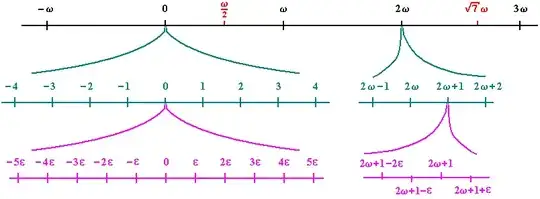The problem is that before you can even consider a proof of a statement, it has to be clear what that statement means. I have no idea what $\infty/\infty=0$ could possibly mean.
The original answer ended here.
Since not everyone was happy with that answer, let me elaborate. Since $\infty$ is not a number, I just do not know what $\infty/\infty$ should mean. Now you could respond that you are using formulas like $\infty+\infty=\infty$ and have been told that that one is true. Well, it is a useful short-hand, but what people really mean when they write this is the following:
If $(a_n)$ and $(b_n)$ are sequences of real numbers such that $\lim_{n\to\infty} a_n=+\infty$ and $\lim_{n\to\infty} b_n=+\infty$, then $\lim_{n\to\infty} a_n+b_n=+\infty$.
Now this is a perfectly fine statement, and it happens to be also true. Another perfectly fine statement (but a wrong one) would be:
If $(a_n)$ and $(b_n)$ are sequences of real numbers such that $\lim_{n\to\infty} a_n=+\infty$ and $\lim_{n\to\infty} b_n=+\infty$, then $\lim_{n\to\infty} a_n/b_n=0$.
Now maybe one could understand $\infty/\infty=0$ in this way, but you would have to say so. And now you also see that it would be hard to see how the “proof” in this question relates to this. Maybe one could make the following weaker statement:
If $(b_n)$ be a sequence of real numbers such that $\lim_{n\to\infty} b_n=+\infty$, then $\lim_{n\to\infty} n/b_n=0$.
One could then say that the “proof” in your question is to be understood as follows:
\begin{multline}\lim_{n\to\infty} \frac{n}{b_n}
=\lim_{n\to\infty}\underbrace{\left(\frac1{b_n}+\cdots+\frac1{b_n}\right)}_{\text{$n$ summands}}
=\\=\lim_{n\to\infty}\underbrace{\left(\lim_{n\to\infty} \frac1{b_n}+\cdots+\lim_{n\to\infty}\frac1{b_n}\right)}_{\text{$n$ summands}}
=\\=\lim_{n\to\infty}\underbrace{(0+\cdots+0)}_{\text{$n$ summands}}=\lim_{n\to\infty}0=0.
\end{multline}
Now here at least every expression has a defined meaning and we can ask: Where is this wrong? Well, it turns out that the second equality is wrong, and the reason why is again boring: There is just no reason that this equality should hold. It is not enough that it somehow looks nice, we would have to cite some theorem that we have proved earlier to justify this equality, and there is none. (Of course we can pinpoint the wrong equation by plugging in a counterexample. For example for $b_n$=n you can evaluate each expression and get $1=1=0=0=0=0$.)
Anyway, my point is that before we can ask why something is wrong it first has to make minimal sense. And the proof in your question is, as they say, “not even wrong”, because it is unclear what the statement is.
